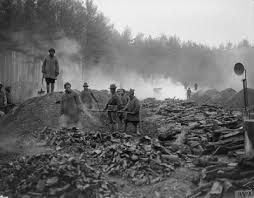It is a cruel summer, and India is staggering under a heat wave. North, East, South, West: all parts of India have stories of thirst and drought. Be it Bihar or Jharkhand, Bengal or Orissa, everywhere you find news about heat wave and scarcity of water.
Much of India is reeling under a scorching heat wave and severe drought conditions that have decimated crops, killed livestock and left at least 330 million people without enough water for their daily needs.
Rivers, lakes and dams have dried up in parts of the western states of Maharashtra and Gujarat, and overall officials say that groundwater reservoirs are at just 22 percent capacity.
In some areas, the situation is so bad the government has sent tankers of water for emergency relief. Monsoon rains are still weeks away, expected to start only in June.
At least 300 people have died of heat-related illness this month, including 110 in the state of Orissa, 137 in Telangana and another 45 in Andhra Pradesh where temperatures since the start of April have been hovering around 44 degrees Celsius (111 Fahrenheit).
That’s about 4-5 degrees Celsius (8-10 degrees Fahrenheit) hotter than normal for April, according to state meteorological official Y.K. Reddy. He predicted the situation would only get worse in May, traditionally the hottest month in India.
The southern state of Andhra Pradesh is running ads on TV and in newspapers urging people to stay indoors during the hottest hours. Construction and farm labourers are advised to seek shade when the sun is directly overhead.
Huge numbers of farmers, meanwhile, have migrated to nearby cities and towns in search of manual labour, often leaving elderly and young relatives behind in parched villages.This is the second consecutive year southern India has suffered from a deadly heat wave, after some 2,500 people died in scorching temperatures last year.
Though heat waves are common during Indian summers, authorities have done little to ensure water security or prepare urban populations for the risks.
This year, Orissa’s capital of Bhubaneshwar and Maharashtra’s city of Nagpur joined Gujarat’s Ahmedabad in launching a heat wave program to educate people on how to stay cool, provide shelters and train medical workers on dealing with heat-related illnesses like sun stroke and dehydration. But most cities and states lack such programs.
This week, more than 150 leading Indian economists, rights activists and academics expressed their “collective anxiety about the enormous suffering of the rural poor” in an open letter to Prime Minister Narendra Modi.
The letter says the official response to the crisis has been “sadly listless, lacking in both urgency and compassion,” and urges Mr. Modi to restore funding for a government program guaranteeing 100 days of paid work a year for the poor and unemployed.
While the monsoon is not expected until June, weather experts hope there would be brief spells of light rain sooner. “The effect would last a few days, before temperatures start rising again,” Indian Meteorological Department spokesman B. P. Yadav said.
[submitted by intern Deb Sarma: prepared from media sources]



Some states in India dying for water, others dying for whisky! toba ! Toba!